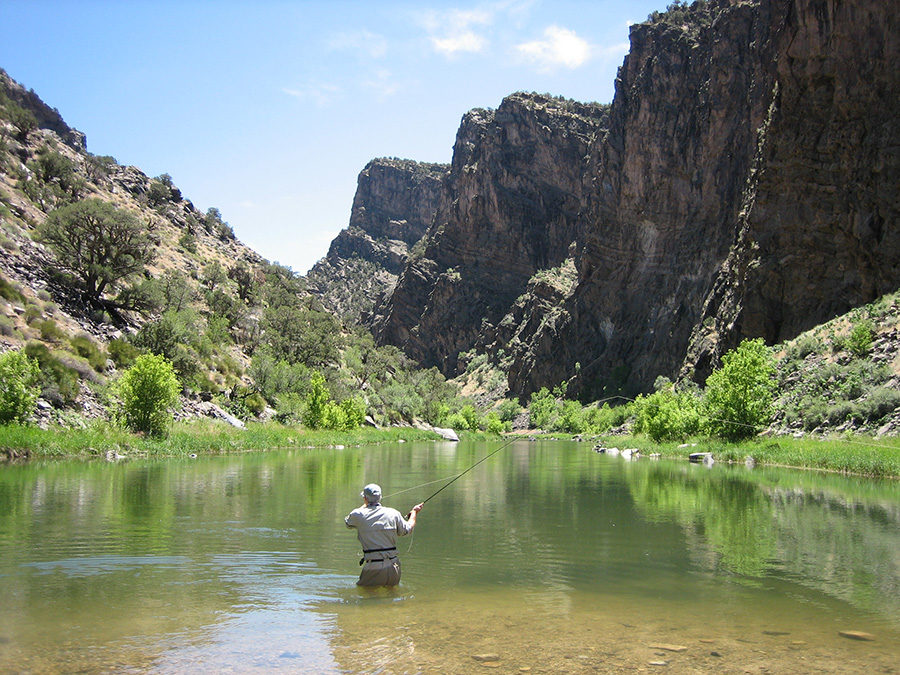Fish Behavior
The first thing we suggest is to view the fish. When you identify a feeding trout, do not immediately cast without considering what to use as bait. 
Watch the fish’s behavior to determine what it may be feeding on and take note of the timing of its rises so that you select the right fly on the water.
Often just focusing in this way can make or break a catch. It’s likewise crucial to understand the different hatch seasons so that you can lure trout with what they are currently feeding on.
Dapping A Dry Fly
Possibly one of the earliest and most basic fly fishing strategies in the book, dapping is a simple technique frequently taught to children. 
This method is fantastic for times when you have little to no area for a big cast. Typically it works when you remain a rod-length back from the water.
Utilizing just the leader through the rod idea, gently lower the fly to the surface, let it drift a couple inches and then choose it up and set it down again.
Essentially, you’re dapping or patting the fly on the water which practically perfectly mimics the behavior of egg-laying mayfly.
Though simple, it enables you to get a fly and perhaps catch a fish in otherwise unfishable areas.
Walk And Wade Different Sections
Lots of anglers today can cast longer lines and fish farther out since modern deal with and tailor make it simple, it does not mean it’s the finest fly fishing method. 
Unless the situation specifically calls for it, reaching far out is not an accurate method to capture trout.
You’ll increase drag, reduction precision, and end up missing a lot of fish. You’ve probably heard that being a strong caster and a good fisherman are not the exact same thing, and we have to concur.
Instead, walk around a little! Research study the currents, read the stream, and discover the most fishable sections.
Wade into the optimum areas if you have to, and work each fishable area of water that you can. Much shorter casts often mean more precise casts, and the portion of getting a bite goes up.
Check Your Bait Frequently
If you have a long day of fishing and casting planned, or there are strong winds in your location, we recommend examining your tippet and fly every four or five casts. 
Particular knots can damage your tippet and tippets are currently prone to get tangled in your fly or even knotted around the hook. Are the trout avoiding your fly? Check it!
Leader Length
Typically when it comes to integrating leader length into your fly fishing methods, 9′ leaders are typically the requirement. 
As your technique improves though, it might be time to longer leaders when fishing both damp or dry flies.
Experiment with the length of your leader from time to time to see what works best for you in your location.







